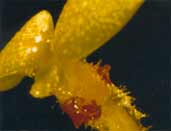


Ecophysiology Research Group

RESEARCH INTERESTS
Bruce Osborne’s group covers a diverse range of interests, but focuses on an understanding of the mechanistic relationship between physiological/biochemical attributes of plants and their performance or distribution. We have used a wide range of approaches, including molecular techniques, in conjunction with other staff members and other collaborating institutions both nationally and internationally, in order to examine plants and cyanobacteria in both terrestrial (natural and man made) and marine habitats. These approaches are backed up by a range of modern state-of-the-art instrumentation including a range of infra-red gas analysers, micrometeorological instrumentation, fluorometers and spectrophotometers, some built in house in addition to a range of growth facilities (growth rooms, cabinets, greenhouses, field sites). Current projects include an examination of salt tolerance in Raphanus species, the impact of the Gunnera-Nostoc symbiosis on natural ecosystems, carbon metabolism in mycorrhizal plants and the Gunnera –Nostoc symbiosis, assessment of the optical properties of phytoplankton species, carbon sequestration in ecosystems and low temperature effects on photosynthesis in forage maize. We have a particular interest in the biology of the Gunnera-Nostoc symbiosis and the ecophysiology of plants in the Burren, Co. Clare. We have also just been awarded a large project funded by COFORD to examine carbon sequestration in Irish forests (see below) together with other collaborators in UCD, using new eddy flux technology. Funding for these projects has been obtained from International (EU) and National sources (Enterprise Ireland, COFORD).